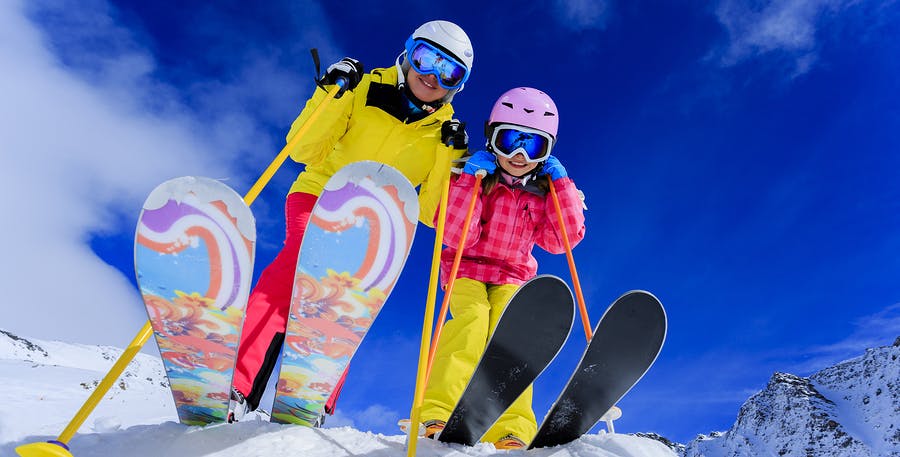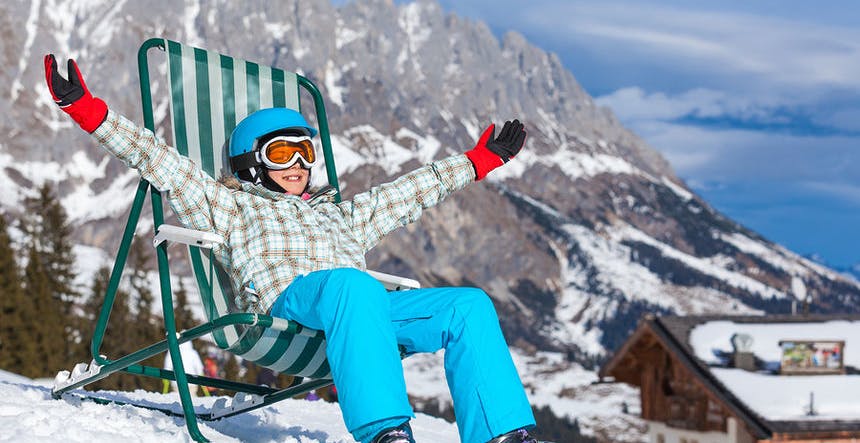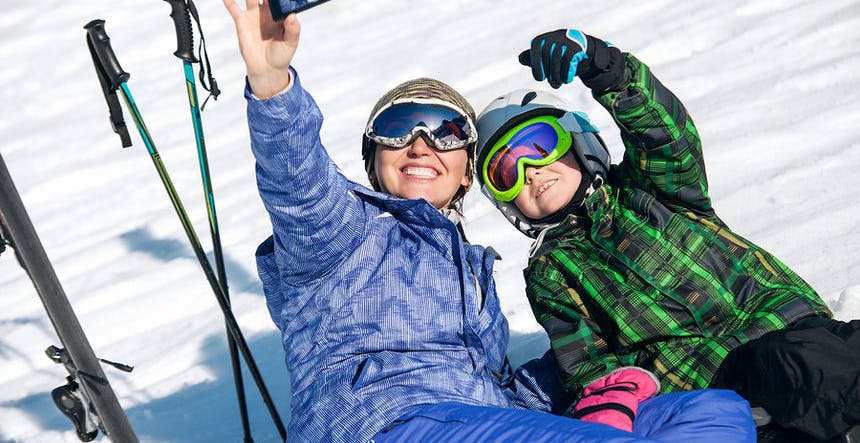10 Tips To Keep Your Kids Safe On The Slopes

Do you know how to keep your kids safe on the slopes? It's a valid question, and one that parents should ask themselves before taking their children out on the hill. If skiing is a new sport for you, and one that you'd like to enjoy with the whole family, well…that's great! We have tons of reasons why skiing is a great family sport (you can even read about them here). But there are also tons of things parents need to consider before exploring a ski resort with kids in tow, and as a ski instructor I have helped numerous families understand what to watch for on the mountain.
Skiing is a high-risk sport, but understanding those risks will go a long way to ensuring you and your family enjoy the sport. Whether skiing is new to your family or you're simply taking the kids out of ski school to make some turns with you for an afternoon, safety should be the first priority. For that reason, we've compiled a list of ten tips to help you keep your family safe and happy on the slopes this season:
1. Know The Lifts
If you've ever seen one of the horrifying videos of a child falling off a ski lift, you'll know why this is at the top of our list. Chairlifts are designed to comfortably seat adults, which means that kids often want to scooch up towards the edge so they can comfortably bend at their knees. Instead, make them shift all the way to the back so they're less prone to slipping off. When loading lifts, have kids ride on the outside so the lift attendants (who are pros at this) can help them get onto the chair properly. Put the bar down, and let kids know when you're about to lift the bar to unload so they don't get spooked.
2. Don't Over-Terrain
In short, stay on the slopes that are easy for them. Kids are often enthusiastic to get higher up on the mountain, especially after gaining confidence after a few days on the bunny slopes. If they've been going to ski school, check in with the instructor about how their skills are progressing, and ask about what terrain they can (and can't) handle. The biggest jump in skills as a new skier is progressing from easy to intermediate terrain; this step also takes the most time. So be patient with your kids, and don't be afraid to seem like the bad guy if you refuse to take them on terrain they aren't ready for. They may get upset, but they'll also stay more safe.
3. Watch The Snowpack
Terrain ratings (greens, blues, blacks) don't change; snow conditions do. Be aware that a steep blue that gets bumped up on a powder day may ski more like a black. Check grooming reports on the resort's website to see what trails have been groomed, and when. Alternately, take note of drastic temperature shifts, especially in the spring. Freeze-thaw cycles, which occur when temperatures climb high in the day and freeze the snow at night, account for dangerously slick conditions in mornings. Consider avoiding very steep terrain, and be sure your kids know how to stop themselves if they fall.
4. Walk Slow In Ski Boots
This is important – perhaps not on the snow, but certainly in and around the lodges! Ski resorts do their best to minimize hazardous walking spaces by salting icy areas and putting down rubber mats. But be cautious when walking in areas near steps and on inclines, which get packed down and become quite slick. Watch for wood floors in slope-side restaurants, as these were not meant for ski boots, and kids (as well as parents!) can easily take a tumble.
5. Protect Against Weather Exposure

The main culprits of skin damage and discomfort for you and your little ones are wind, sun, and cold. Bitter cold can easily cause frostbite on the nose and toes. Wind exacerbates cold temps and leaves skin feeling raw and chapped. UV exposure from sun is strongest at high altitudes; and 80-90% of UV rays are reflected off the snow. So keep checking in with your kid about cold toes, cover up their necks and cheeks with a balaclava in wind, and always wear sunscreen.
6. Prepare For Powder
Powder days are the best days – and the ones that lots of little rippers wait for all season long. But kid skiers (even the advanced ones) have two additional obstacles here: they are shorter than adults, so the powder will feel super deep; and they don't weigh as much, so deep pow will slow them down. If the snow depth rises to their hips, consider staying close to groomed slopes so kids have an easy way out if they start to get stuck.
7. Stick Together In The Trees
Tree skiing has a special allure for all adventure-seekers, and especially for kids. Trees add an element of extreme to skiing, even on slopes with mellow aspects. As such, advanced kids will beg you to ski tree runs. Be sure to stick together and ski side by side, giving each other room but skiing as partners. Tree wells, which are hollow areas below the snow build-up around the bases of trees, claim a handful of lives each season when a skier suddenly drops below several feet of snow and is unable to dig themselves out. So keep it safe and stick with your child.
8. Make A Back-Up Plan
We've all gotten lost a time or two in our lives, whether it's shopping with mom at the grocery store or skiing with friends on the mountain. When I worked at a major resort, kids and parents alike approached me all the time looking for someone in their family who had taken a different turn down a slope. Make a "just in case" plan with your kids to decide what each of you will do if someone gets lost. Meet at the bottom of a certain lift, or find an employee and call a certain number immediately. It will save each of you some stress if this does happen.
9. Get Gear That Fits
Good-fitting gear is not only essential for a child's comfort – it means staying safe. Boots that are too large mean lack of ski control; a helmet that doesn't get strapped under the chin can easily slip off in a crash. If you're renting gear for your child, the professionals at the store can ensure that everything fits properly. If you borrow gear or suit your kid up yourself before dropping her off at ski school, check with the instructor if you have questions about fit at the beginning of the day. If there's an issue, you'll have time before the lesson starts to get it sorted out in the rental shop.
10. Watch for Fatigue

If you are a parent and you're reading this, chances are you've encountered exhausted-kid-after-an-exciting-day syndrome. Well, skiing is no exception, and like any other exciting activity, your kid will likely insist on going, going, going…until they're gone. Take this on faith: you don't want this to happen at the top of the gondola on the last run of the day. So make your kids take breaks. Have snacks. Drink water. Enforce the famous 'no pee, no ski' rule. Consider winding down the day with a few easy laps on the lower mountain instead of grabbing last tram. When we get tired, we lose our best skiing (and thinking) abilities, so watch for fatigue and when it comes, call it quits. Grab first chair tomorrow instead.
We hope this list helps create a context for skiing safe with your kids. While skiing is inherently a high-risk sport, it's also one of the best sports ever, and you can enjoy it by staying safe on the slopes. Happy turns!